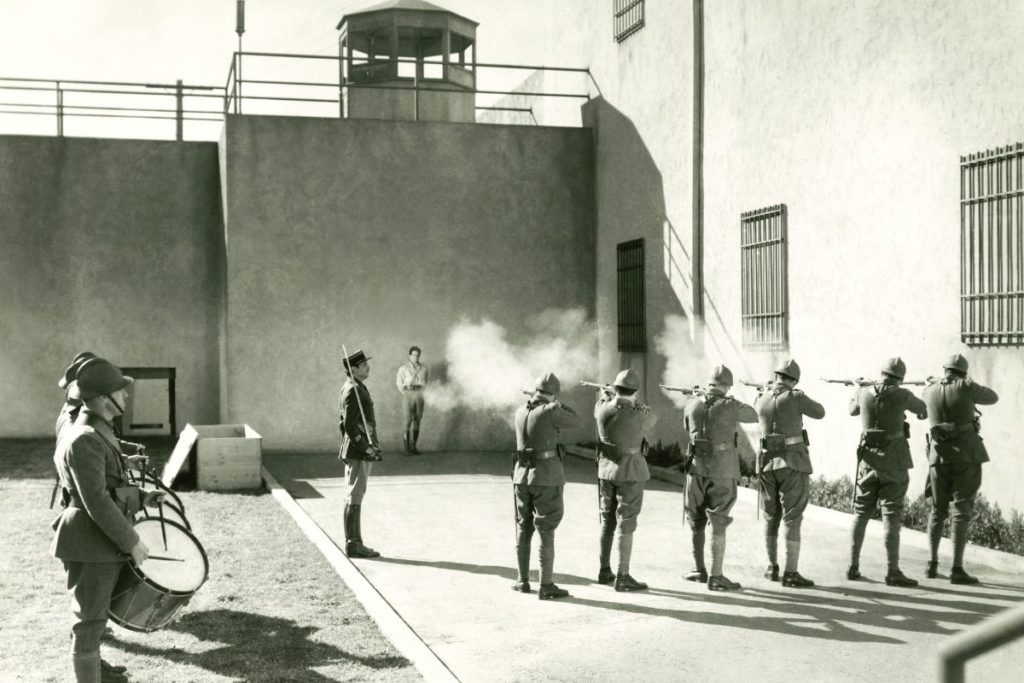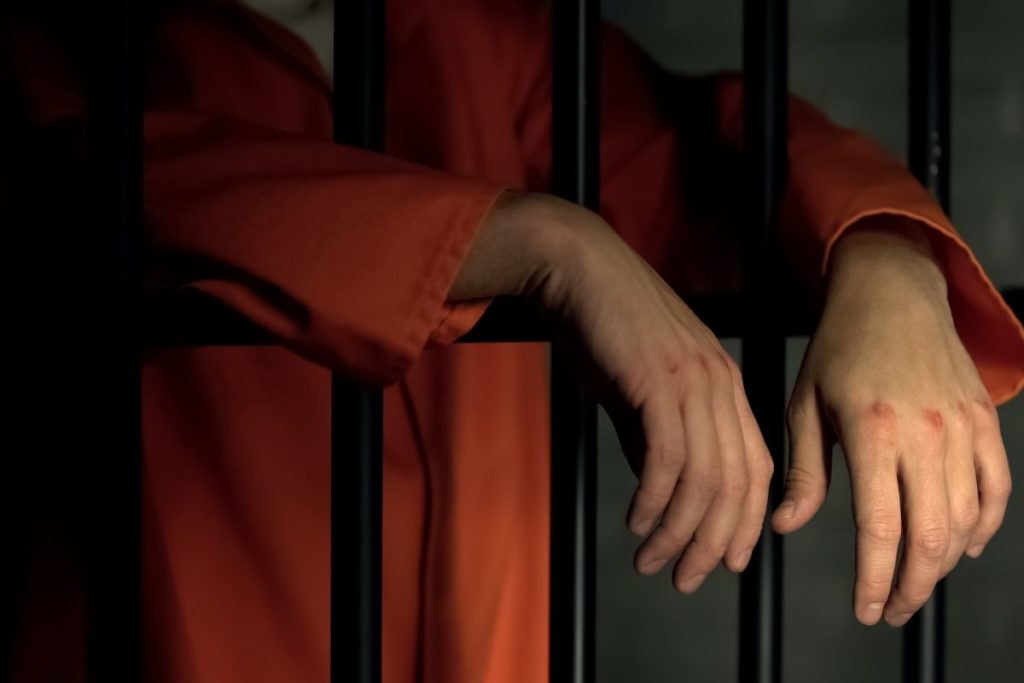Last Updated on May 21, 2022 by Fair Punishment Team
The death penalty was first established in Idaho in 1864, around 26 years before statehood.
The first territorial execution occurred in the same year, and before it’s admission to the Union in 1890, 14 men had been executed by hanging in the state.
Between 1890 and 1957, a further 12 men were executed by hanging.
However, in 1957 the United States Supreme Court decision Furman vs Georgia invalidated all death penalty schemes across the US, separating opinion.
This was not the end of the death penalty in the US, however, and in July 1973 Idaho passed new statutes.
In addition, the 1977 case Gregg vs Georgia resulted in the Supreme Court’s acceptance of the death penalty once again in the United States.

At this point firing squad was the sole method of execution, until the adoption of lethal injection in 1978. The two remained as methods until 2009, when the option of a firing squad was diminished.
However, the state of Idaho has never used a firing squad as a method of execution. Since 2009 lethal injection has remained the sole execution method.
Since 1976, there have been only 3 death penalty execuctions in 1994, 2011, and 2012. In total there have been 29 executions in Idaho since 1864, with 8 inmates currently on death row.
Idaho has never executed a woman, however, Robin Lee Row is currently the only woman on the state’s death row following the murder of her husband and their two children in 1992.
How Does Someone Get Sentenced To The Death Penalty In Idaho?
When a case goes to trial in Idaho, in certain cases the prosecution has the option to seek the death penalty. Whether or not the defendant is sentenced to the death penalty will depend on the jury.
In order for the death penalty to be given, the jury must come to a unanimous decision, which means that every member of the jury must agree that the defendant should receive the death sentence.
If there is a hung jury (in which the jury are unable to make a verdict) during the penalty phase of the trial, then a life sentence will be issued and there will be no retrial – even if just one member of the jury opposed the death sentence.

Male prisoners on death row are incarcerated in Idaho Maximum Security Institution near Kuna. Female death row prisons are incarcerated in Pocatello Women’s Correctional Center.
If a death row inmate wants to appeal their sentence, they must seek an appeal for clemency (leniency) from the Idaho Commission of Pardons and Parole.
What Crimes Can Be Punished With The Death Penalty In Idaho?
In Idaho, the prosecution can seek the death penalty for the defendant if they have committed first-degree murder.
However, there are a series of aggravating factors that the crime must meet in order for the death penalty to be given.
Here are some of the factors:
- The defendant has been previously convicted of another murder
- At the time that the murder was committed, the denfendant also committed another murder
- The defendant knowingly created a risk of death to many people
- The murder was especially, cruel, atricious, or heinous
- The defendant committed murder for payment or the intention of payment, or employed another to commit to the murder for payment
- The defendant exhibited a total disregard for human life in the circumstances surrounding the murder
- The murder was committed during or in an attempt to commit arson, rape, kidnapping, burgulary, robbery, or maiming
- The murder was committed during or in attempt to commit crimes against nature, including any and all indecent sexual acts against or sexual exploitation of a minor, including those who 16 or 17 years of age
- The defendant whether before, during, or after the murder showed any signs of a prospensity (affinity) to commit murder, making them a continuing threat to society
- The murder was committed against a former or present officer of the court, judical officer, prosecuting attorney, executive officer, or peace officer because of excercising their official duty
- The victim of the murder was a witness or potential witness in a criminal or civil legal proceeding.
In Idaho the death penalty can also be given to defendants charged with kidnapping in the first-degree, if the crime involved any of the following factors:
- The kidnapping was especially cruel, heinous, or atrocious
- The defendant knowingly created a high risk of death to any person, including the kidnapped victim
- The victim of the kidnapping was subjected to torture, maiming, or grievous mental and physical harm by either the kidnapper, or those acting in alliance
- The kidnapping was committed for the promise of payment, or the defendant employed another to commit the crime for the purpose of payment
- The kidnapping was committed with the purpose of murdering or maiming a witness or potential witness in a judicial or civil legal proceeding
In Idaho the death penalty can also be applied to any case that includes perjury causing execution of an innocent person.
This means that if you have lied under oath, which has caused an innocent person to be wrongfully executed, then you yourself will face the death penalty.
In order for the death penalty to apply in this instance, no aggravating factors need to be proved.
Notable Exonerations
Charles Fain
In 1983 Charles Fain was convicted of the murder of a 9-year-old girl which happened in Nampa, Idaho in 1982.
However, several witnesses testified that Fain had been living in the neighboring state of Oregon at the time, and didn’t return to Idaho until the month following the murder.
Fain provided investigators with hair samples, in which an FBI expert testified that the samples provided by Fain matched evidence found at the crime scene, and in 1983 Fain was sentenced to death.
Fain appealed to the Idaho Supreme Court, however, evidence from the case had been destroyed in “good faith”.
In 1989 the State Supreme Court upheld Fain’s conviction, but the judge was ordered to re-sentence Fain. Once again he was given the death penalty, and in 1991 the Idaho Supreme Court affirmed the decision.
It wasn’t until 2001 that new DNA testing methods not only ruled Fain out as a suspect, but pointed investigators towards two other suspects.
In June 2001 Fain was acquitted of all charges and released later that year.
In 2021, Fain received $1.3 million in compensation for his wrongful conviction.
Donald Paradis
A second notable case involves Donald Paradis, who spent 20 years on death row in Idaho before his convictions were overturned and he was released from prison.
Back in 1980, a young couple were killed in Paradis’ home in Spokane, Washington.
Paradis was the leader of a motorcycle gang, and the couple (Kimberly Anne Palmer and Scott Currier) went to Paradis’ house to confront the gang about stolen guns.
During the dispute Palmer was strangled and Currier was beaten to death, however, Paradis was not home at the time.
When he did return, he helped dispose of the bodies and drove them across state lines to Post Falls, Idaho.
Several witnesses claimed to have seen Paradis near where the bodies were found, and he was arrested and tried for the murder of Scott Currier in Washington, however, he was acquitted.
He was then tried for the murder of Kimberly Anne Palmer in Idaho, after a medical examiner (Dr. William Brady) claimed that fluid in her lungs indicated she died in Idaho.
Paradis was found guilty and sentenced to death in 1981.
However, two private pro bono attorneys took on the case years later and discovered that the prosecutors had withheld notes from the autopsy that contradicted the statements made by Dr. Brady during the trial.
Based on the new evidence Paradis’ attorney’s filed numerous appeals, and he was acquitted of all murder charges.
In 2001, he did, however, plead guilty to moving the bodies and was sentenced to 5 years, but was released on time served.
Clemency
Today, inmate Gerald Pizzuto Jr. – who was sentenced to death in 1986 after committing two murders – has continusouly appealed to the Idaho Commission of Pardons and Parole to revoke his death sentence based on medical grounds.
As he suffers from bladder cancer, chronic heart disease, coronary obstructive pulmonary diseases (COPD), and Type 2 diabetes, Pizzuto hopes his death sentence will be changed to life in prison, as his current physical condition makes him a very little threat to others.
The current Idaho Governor, Brad Little, has rejected Pizzuto’s motion to change his sentencing.
Final Thoughts
Idaho has a long history of using and upholding the death sentence.
However, as a state with a relatively small population, there have been very few executions, and there is an even smaller number who are currently serving time on death row.
Only three death row inmates have been executed in the state since the United States Supreme Court lifted the suspension of the death penalty in 1976.
There are currently 8 inmates on Idaho’s death row, but with Gerald Pizzuto Jr. currently seeking clemency, this number may soon change.
